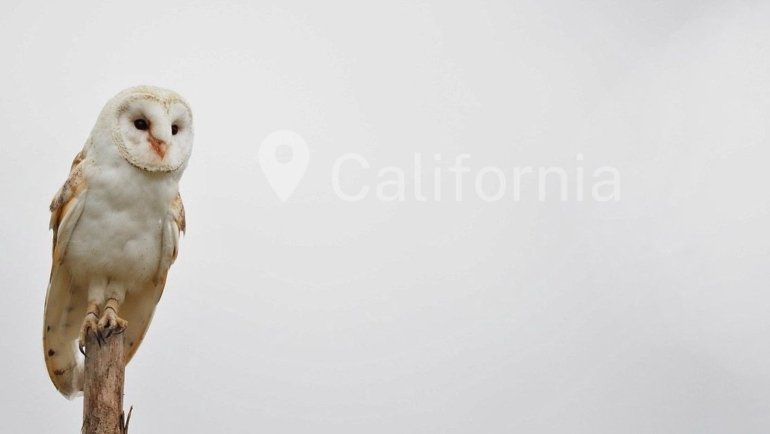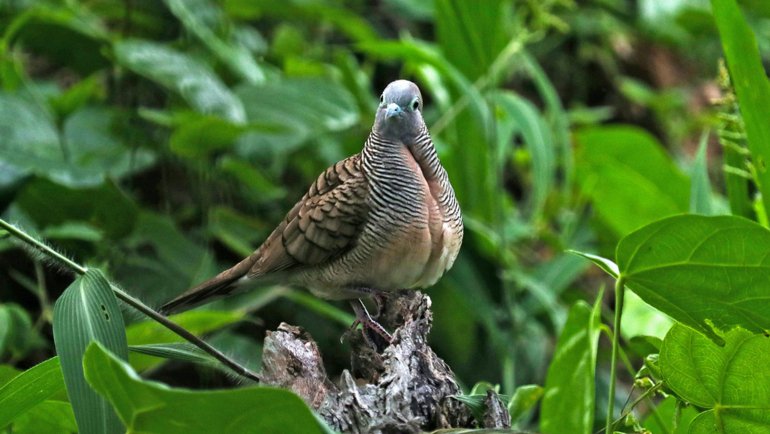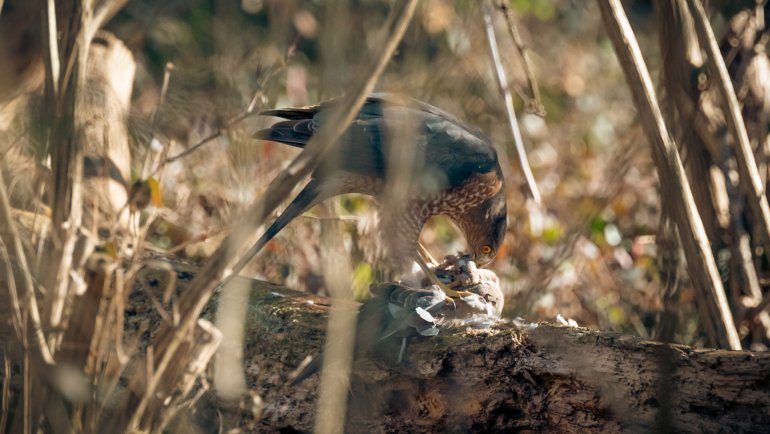Welcome to our delightful journey through the world of pink parrots! Whether it’s a light blush or a vibrant rose, pink is a color that truly stands out in the animal kingdom, and parrots are no exception. With a palette ranging from soft pastels to intense hues, pink parrots are a captivating sight.
Whether you’re an avid bird-watcher, a potential parrot parent, or just someone who appreciates the colorful diversity of wildlife, this exploration of pink parrots is sure to enthrall you. We’ll delve into both wild species and those that can be kept as pets. So, let’s begin our journey with the charming Bourke’s Parakeet!
Bourke’s Parakeet

- Scientific Name: Neopsephotus bourkii
- Size: 7-8 inches (18-20 cm)
- Lifespan: 5-8 years
- Where Found: Australia
The Bourke’s Parakeet, also known as the Bourke’s Parrot, is native to Australia. These charming birds are adorned with shades of pink on their chests and bellies, contrasting beautifully against their blue rumps and brownish-grey backs.
In the wild, these parakeets prefer grasslands, woodlands, and farmlands, feasting on seeds and occasional insects. They are crepuscular, meaning they are most active during the twilight hours of dawn and dusk.
As pets, Bourke’s Parakeets are known for their peaceful and calm demeanor. They are not as noisy or demanding as some other parrot species, making them a great choice for families or first-time bird owners. They may not be as interactive as some parrots, but they are certainly enjoyable to watch.
Did you know? The Bourke’s Parakeet was named in honor of Sir Richard Bourke, the Governor of New South Wales from 1831 to 1837.
Salmon-Crested Cockatoo / Moluccan cockatoo
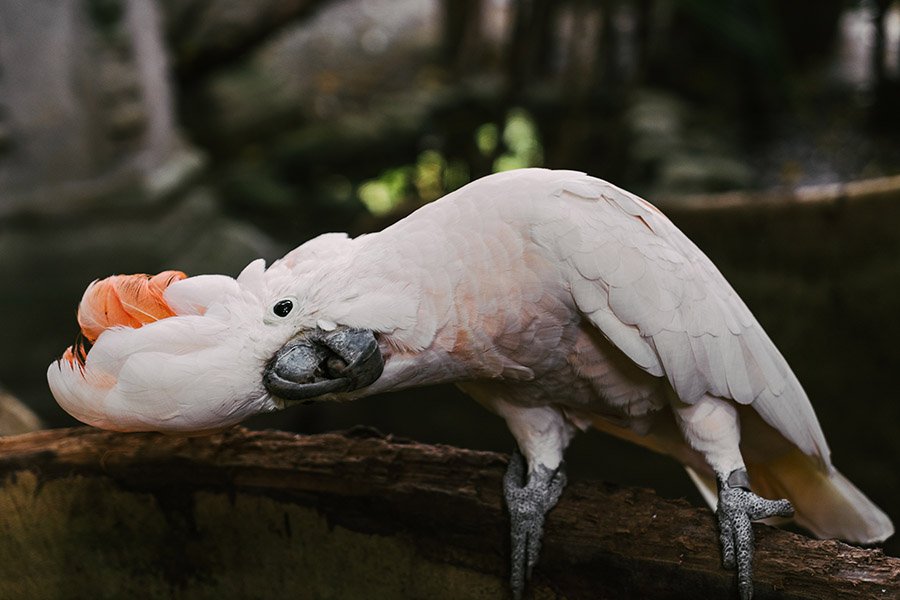
- Scientific Name: Cacatua moluccensis
- Size: 20 inches (50 cm)
- Lifespan: Up to 70 years
- Where Found: South Moluccas in eastern Indonesia
The Salmon-Crested Cockatoo, more commonly known as the Moluccan Cockatoo, is an impressive parrot with soft pink feathers covering most of its body. Its standout feature is its large, retractable crest, which changes from a light pink at the base to a bright salmon color at the top when fully extended.
Moluccan Cockatoos are native to the South Moluccas in eastern Indonesia, where they inhabit lowland forests. They are also highly intelligent and sociable birds, known for their loud calls that can carry over long distances in the wild.
As pets, they are affectionate and crave constant attention, making them a demanding but rewarding companion. They can mimic human speech, making them a favorite among bird enthusiasts.
Did you know? The Moluccan Cockatoo is one of the largest cockatoo species and can be incredibly loud. Their screams can be heard up to several miles away!
Little Corella / Bare-Eyed Cockatoo

- Scientific Name: Cacatua sanguinea
- Size: 14-17 inches (36-42 cm)
- Lifespan: Up to 50 years
- Where Found: Australia and New Guinea
The Little Corella, also known as the Bare-Eyed Cockatoo, sports a mostly white plumage with a subtle pink flush on its face and under its wings and tail. Its most distinctive feature is the blue ring around its eyes, giving it its “bare-eyed” nickname.
In the wild, they are found across Australia and New Guinea, living in various habitats, including woodlands, grasslands, and urban areas. They’re social animals that form large flocks and can often be seen foraging for food on the ground.
When kept as pets, Little Corellas are known for their playful nature and high intelligence. They enjoy problem-solving games and can learn to mimic speech, although they’re not as proficient as some other parrot species.
Did you know? The Little Corella is known for its impressive aerial acrobatics. These birds can often be seen doing flips and roll in the air, much to the amusement of onlookers.
Major Mitchell’s Cockatoo / Pink Cockatoo
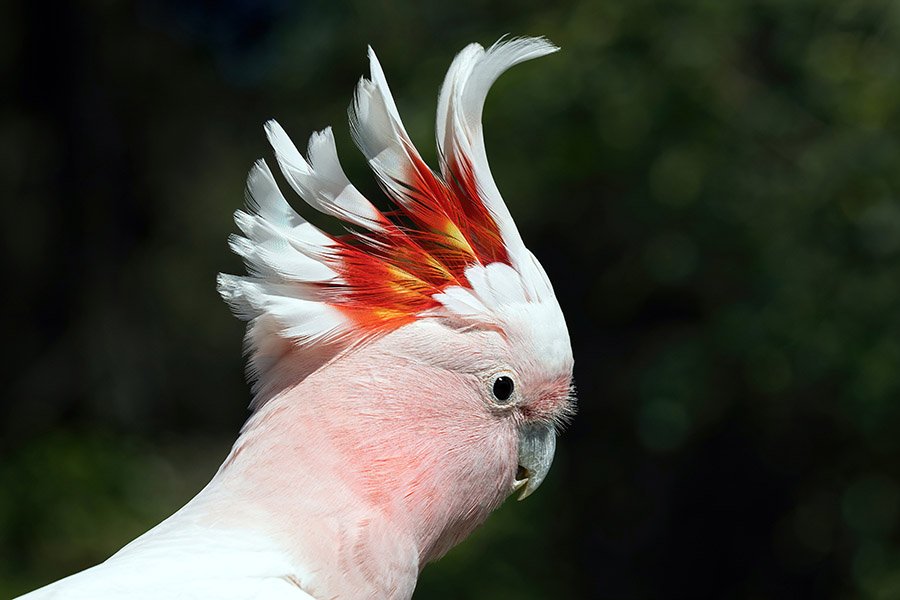
- Scientific Name: Cacatua leadbeateri
- Size: 13-15 inches (34-38 cm)
- Lifespan: Up to 40-60 years
- Where Found: Interior regions of Australia
Sporting a stunning array of pastel colors, the Major Mitchell’s Cockatoo, often referred to as the Pink Cockatoo, is one of the most visually striking parrot species. They exhibit an elegant mix of white and soft pink on their bodies, with a vibrant, red-and-yellow banded crest that sets them apart from other cockatoos.
Native to the arid interior regions of Australia, these birds prefer habitats like woodland, scrubland, and near watercourses. In the wild, Major Mitchell’s Cockatoos feed mainly on seeds of native shrubs and trees, but will also consume roots, bulbs, and insects.
In a pet setting, Major Mitchell’s Cockatoos are known to be more independent and less cuddly than other cockatoo species. However, their beauty, intelligence, and complex personalities can make them rewarding pets for experienced bird owners.
Did you know? The Major Mitchell’s Cockatoo is the only cockatoo species where the male and female can be distinguished by their eye color. Males have dark brown eyes, while females have reddish-pink eyes!
Galah Cockatoo / Rose-Breasted Cockatoo
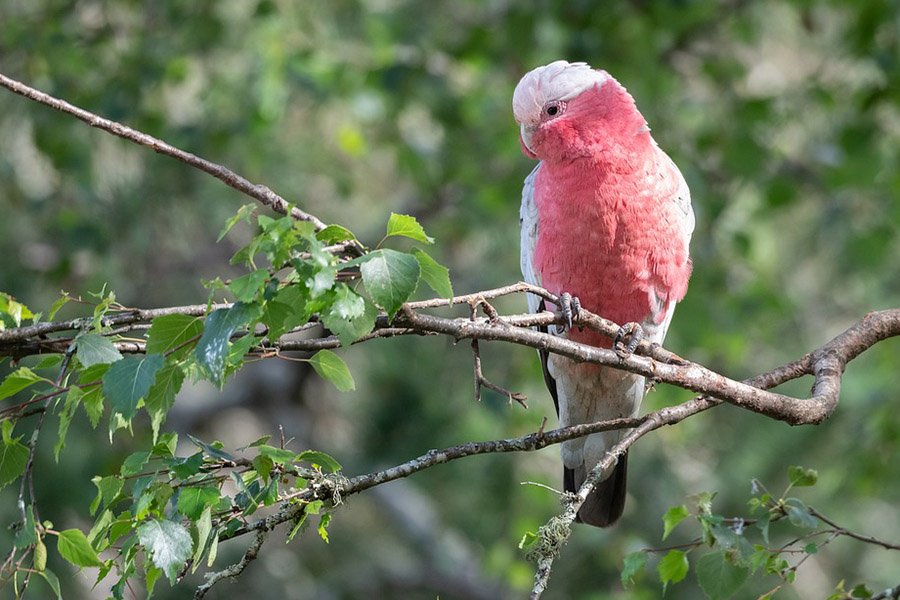
- Scientific Name: Eolophus roseicapilla
- Size: 12-15 inches (30-37 cm)
- Lifespan: 40-70 years
- Where Found: Australia
The Galah Cockatoo, also known as the Rose-Breasted Cockatoo, is an absolute joy to behold with its vibrant pink chest and face, gray back and wings, and iconic crest. These birds are one of the most common and widespread cockatoos and can be found all across Australia.
Galah Cockatoos inhabit a wide range of habitats, from bushlands and forests to populated urban areas. They are extremely sociable and are often seen in large, noisy flocks, foraging on the ground for seeds and grains.
As pets, Galahs are affectionate, intelligent, and full of energy. They can learn a variety of tricks and commands, and some can even learn to mimic human speech. Their playful antics and stunning colors make them a popular choice among bird enthusiasts.
Did you know? The term “galah” is also Australian slang for a foolish or clownish person – a testament to the bird’s playful, boisterous nature and its prominent role in Australian culture.
What Makes Parrots Pink?
Parrots display a fascinating array of colors, but pink parrots truly stand out for their unique, delicate hues. So, what makes them pink? Like other birds, parrots’ coloration comes from pigments and structures in their feathers. The pink coloration in parrots comes from a pigment called Astaxanthin, a type of carotenoid.
This pigment is often sourced from the parrots’ diet, particularly from certain types of fruits, flowers, and seeds. When ingested, these pigments are deposited into the feathers as they grow, resulting in the stunning pink hues we see. Light reflection and refraction also play a significant role, adding shine and depth to the colors.
As for the advantages, pink coloration can help parrots blend in with their environment, especially in places with an abundance of pink flowers or during sunsets. It can also play a role in attracting mates, as vibrant colors often signify good health and genetic fitness in the animal kingdom.
Final Thoughts
We have embarked on a colorful journey exploring some of the world’s most stunning pink parrots, from the serene beauty of the Bourke’s Parakeet to the dazzling charisma of the Galah Cockatoo. These extraordinary creatures serve as living reminders of nature’s creativity and diversity.
Whether in the wild or in the comfort of our homes, these pink parrots captivate us with their color, character, and charm. As we continue to appreciate their beauty, let’s also commit to protecting these wonderful birds, their habitats, and the myriad of colors they bring to our world.
Until next time, keep your eyes on the skies, and who knows – you might just spot a flash of pink!

